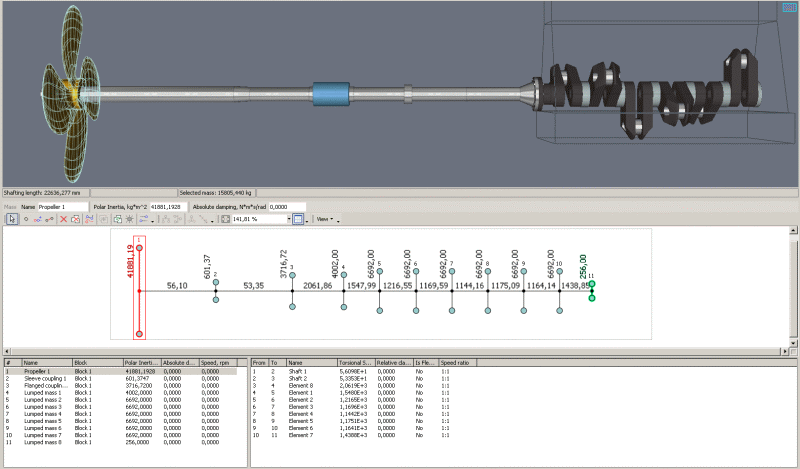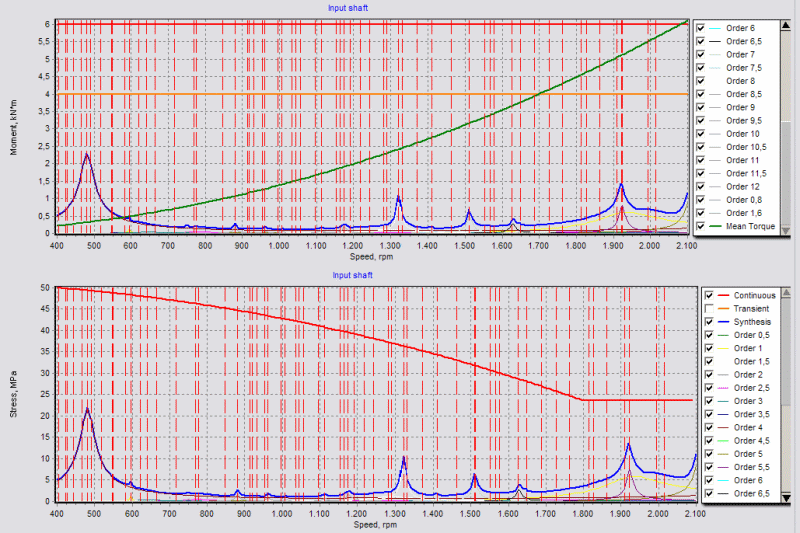
Torsional vibration calculations:
A torsional vibration is a vibration that occurs in shaft installations, in which a mass due to its inertia, vibrates along the centerline of the shaft or shaft. Torsional vibration can be very dangerous and cause serious damage, such as fatigue in shafts, fretting in splines or keyways, failure of elastic couplings, and damage to gears and clutches.
Furthermore, torsional vibrations can cause disturbance in the proper operation of regulators or governing systems. The danger of torsional vibrations also lies in the fact that torsional vibrations need not result in discomfort to operators or crew until it is too late.

Why calculate the vibration behaviour?
Torsional vibrations occur in shaft installations as a result of some form of non-uniformity in speed. These non-uniformities are often generated at the driving end, but also gears, pumps or propellers can excite torsional vibrations. Diesel engines in particular are a very common source of torsional vibrations.
Unlike linear vibrations, one does not “feel” or otherwise notice the presence of torsional vibrations. As the vibrations occur around the centerline of shafts, the amount of reaction force that enters the supporting construction is minimal. This is unlike lateral vibrations, which can cause the installation to shake on its foundation. Furthermore, the degree of vibration can lead to serious damage and easily cause an installation to fail.
How does it work?
On the basis of mass (inertia) and stiffness of all parts of the installation, a computer model is build. As the importance of torsional vibrations is well understood, most manufacturers of engines, motors, propellers and pumps can produce the properties of their components with regards to a torsional vibration calculation.
Furthermore, manufacturers of elements such as elastic couplings and torsional vibration dampers provide a wide range of stiffnesses, which makes it possible to “tune” torsional vibrations in an installation away from operating speeds, or provide damping which prevents torsional resonances from even becoming a problem at all. As such, a torsional vibration is often a quite accurate prediction of real-life behaviour.
